Coarse fishing reels explained
If you’re new to fishing or just thinking about purchasing a new fishing reel, Chris Smith delves into the detail about his coarse fishing reels and explains the benefits and features of the different types.
In this article I’m going to start off by discussing closed-face reels. I will then move on to discuss the ubiquitous fixed spool spinning reel, just to complete the picture and make sure that there is something for everyone. I will cover the different types of spinning reels available and how they work, including the ‘baitrunner’ types.
I also plan to talk about the benefits of a centrepin, another reel that, like the closed-face, is very much at home on rivers but has never really been a very popular choice throughout my lifetime. Despite being a firm favourite for a few redoubtable anglers, the centrepin is still seen by most as a ‘niche’ bit of kit.
I will finally end up with a brief description of baitcaster reels with a plan to tell all that I know – which should take no more than a couple of minutes.
So, ladies and gentlemen, please grab a cup of tea, get comfy and put your feet up as you peruse this piece alternatively titled ‘Everything you need to know about coarse fishing reels but were afraid to ask.’ Enjoy.
Closed-face reels
I am starting off with closed-face reels because if there is a ‘black hole’ in the knowledge about any particular kind of reel it will be these. They are called closed-face because the line is fed off the spool through a thin circular gap between a rotor and an outer shield. You cannot see the spool and you cannot see the rotor moving because it is all closed off, hidden away from sight. To many, how this type of reel works might be a mystery, and to others, even though they actually use one, the full understanding of the operation may still be a little confusing.

A partially dismantled closed-face reel. On the left is the main body that contains the gears. Working right we come to the spool which houses the line. Next we have the rotor which is the part that spins (the clue is in the name) and also houses the ‘pick up pins’ which are the devices that pop out to retrieve line and pop back in again when the button is pressed to allow line to peel off the spool. Finally, far right we have the cowl, sometimes called the shield or cover, that not only protects the rotor and spool but its main operational function is to keep the line close to the rotor so that it is always gathered up by the pick-up pins.
I am a big fan of closed-face reels and own numerous old Abu 506 models from the ’70s and ’80s, alongside six or seven examples of the Abu 507 mk2 Goldmax and several Abu 1044 and 704 reels. I have also briefly owned a Daiwa 125 match, a D.A.M. CFM and a model from Ryobi.
Closed-face reels are dead easy to use. Usually you just have to press the ring in the middle of the front of the rotor to release the line and simply wind the handle to retrieve. They are perfect for stop-start stick float fishing and river waggler work as the angler constantly mends the line and then releases it as they work the float downstream. A few of the older designs that are rarely seen and less used in the UK have a lever or button located elsewhere. I have never actually used one of these ‘in anger’ but I think they are probably more suited to casting lures.
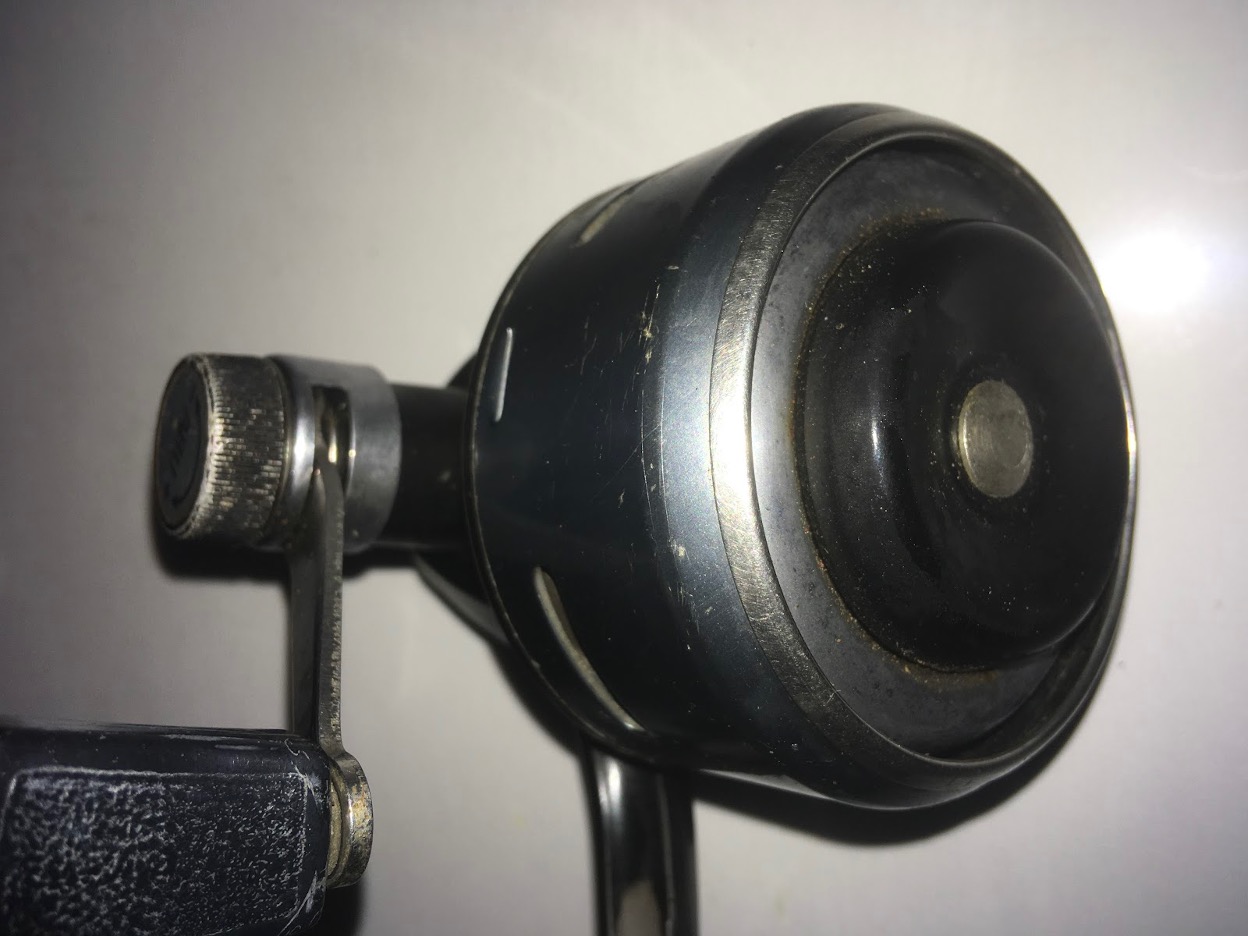
Here can be clearly seen the operating ring, the ring that is pressed when releasing line from a closed-face reel. Ignore the metal bullseye right in the centre, that is in fact the head of the spindle that the operating ring acts upon. Anglers should press anywhere on the perimeter of the black ring which then pulls the spindle out. This clever bit of design means that, even though the operating ring rotates with the rotor, it can be pressed anywhere around the 360° of perimeter and it will still release the line. Genius.
The action of winding the handle on a closed-face reel automatically extends one (or sometimes two) pins that catch the line and wrap it back onto the spool.
Unfortunately all the commonly used closed-face reels in the UK seem to invariably have similar issues. During windy conditions, line can be blown back up inside the reel and wrap itself terminally around the rotor. I have lost count of the number of times this occurred to me during matches, especially using the old Abu 506 reels in the 80s and 90s, with me breaking off, unwrapping the line, and splicing it back together to get me through the match.
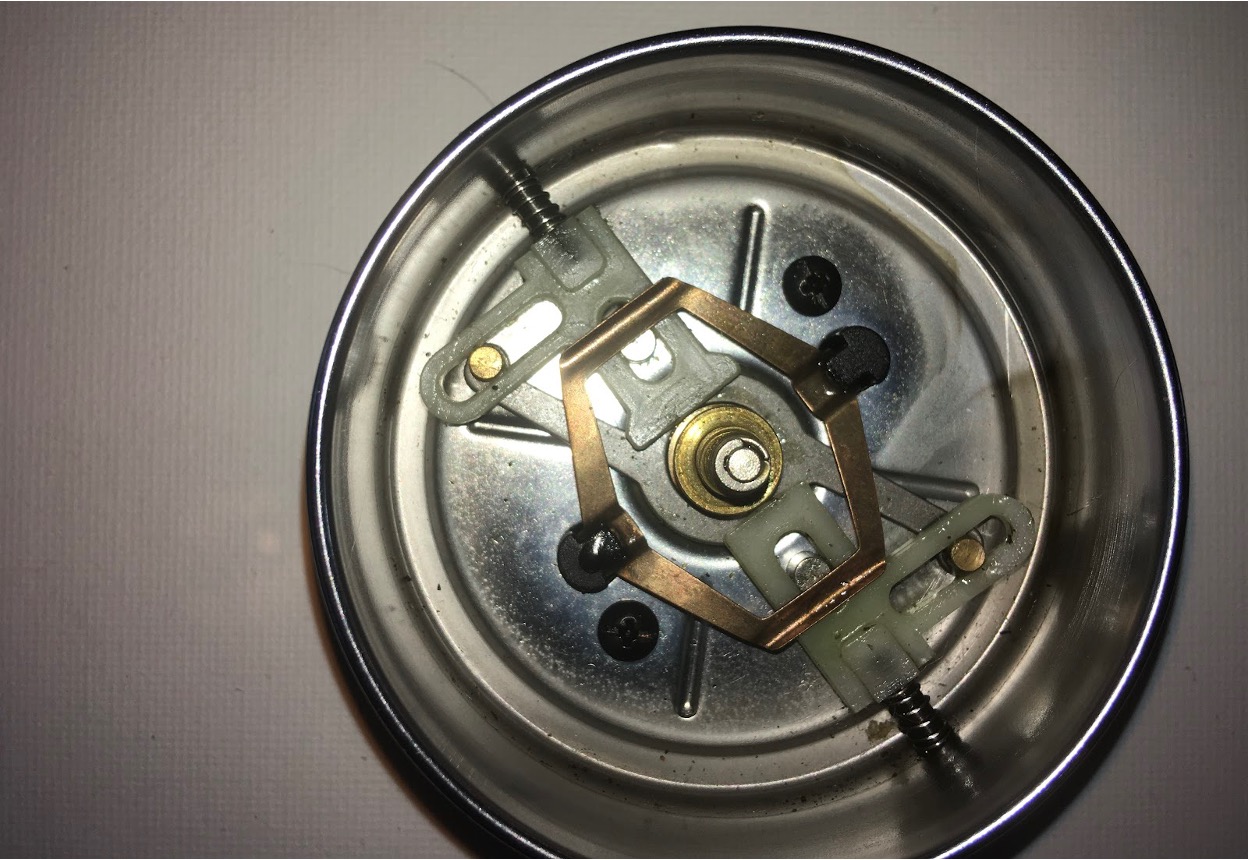
This is what the inside of the rotor looks like on an Abu closed-face reel. It looks rather complicated but it is actually quite straightforward. Keeping it clean and properly lubricated is critical to getting trouble free performance. It is really important that owners of these reels get educated about how to strip this mechanism down because this is where line gets caught and becomes wrapped around the spindle. Virtually every second hand closed-face reel I have ever purchased has line caught here. Some may have quite an obvious birds-nest of line, with others it may be more subtle and need to be dismantled to get to the miniscule one or two wraps of line that will nevertheless still be affecting the performance.
Some of the early Abu spools were just pressed alloy with a very thin lip, providing absolutely no protection against line wraps. Spools were then offered that had chenille fixed into a groove around the outer lip, a device designed to close the gap between the spool and the inside of the rotor. The intention is to close the gap sufficient to stop the line getting blown past and into the rotor, and I have to say that it generally improves the performance. However, the chenille must be changed frequently because it flattens out over time and then becomes ineffective.
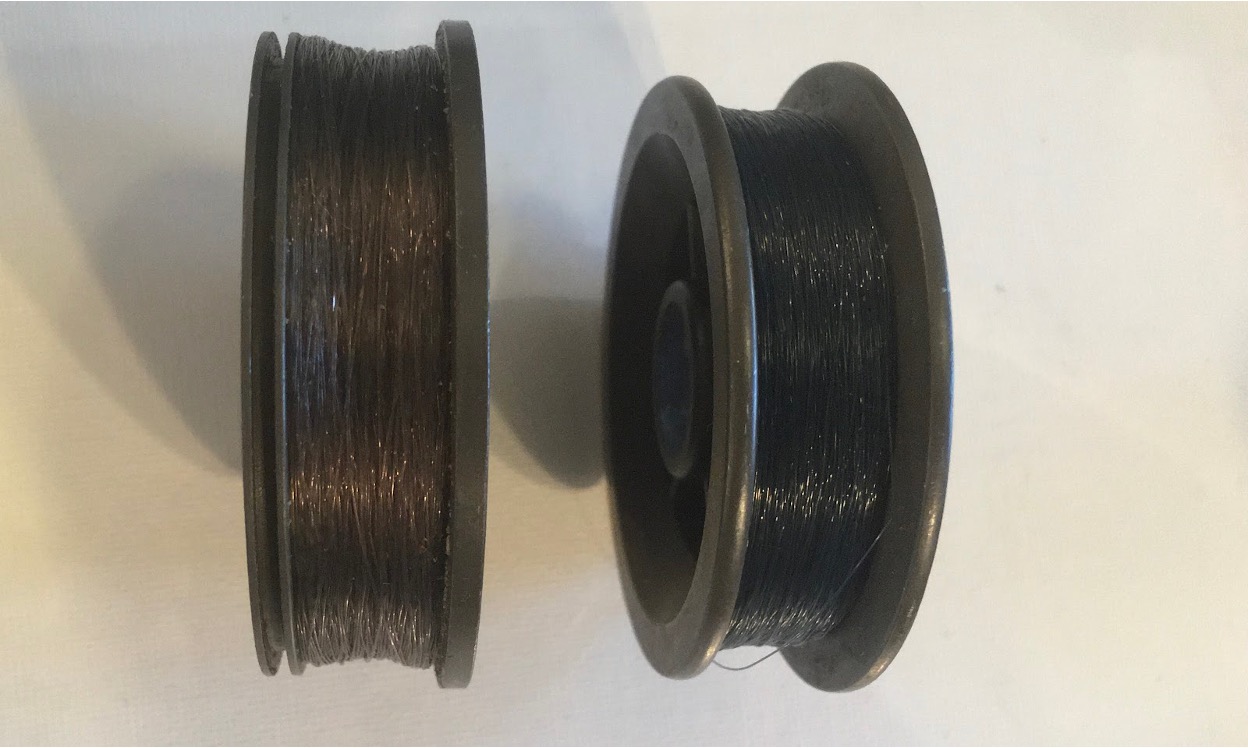
Two spools, one with a groove for a chenille line guard (on the left) and one on the right without a groove. The chenille is missing from this spool as I am in the process of replacing it, but I thought it would be helpful to show the location where it fits. Note: the Goldmax reels were originally not fitted with a chenille line guard, they had a new ‘improved’ design of seal made of a rubber band with fingers that were supposed to rub against the inside of the rotor. Unfortunately, the material used proved to be less robust than the design and the rubber perished with alarming rapidity. Original line guards are no longer available (I believe) and the spools now need to have a small hole drilled into them to enable a chenille to be fitted. It is an easy enough job and done properly can bring a Goldmax back to life.
Another problem with early reels was line bedding. In the middle of a ‘purple patch’ you might hook a bigger fish like a chub that leads you a merry dance all the way from the bottom of your peg and you have to pull hard to get the fish to respond. Flushed with success you drop the fish in the net and try to get out again as quickly as you can to catch another. Trouble is your next cast only reaches five yards in front of you because the line has become embedded into itself on the spool. Patiently you have to pull line off your reel and keep feeding your float downstream until sufficient line has become freed for you to recast properly. It can be really frustrating!

Two Abu Gold Max 507 Closed-Face reels. Abu developed these reels in conjunction with Dave Harrell in the late ’80s early ’90s. Dave Harrell is one of the best UK running-line anglers of all time and now younger anglers will be more familiar with the fact that he organises Riverfest and also has his own float making business. Dave used to use the original Abu 506 reels for river work before he assisted in the design of these. The reel on the right has adjustable drag as evidenced by the drag adjustment knob on the handle. This was made to satisfy the global market for these reels where a drag system is commonly used. UK river anglers always preferred to backwind rather than use a clutch so the design on the left, called the ‘Match’ version, does not have a drag system. This, I believe, was the version specifically designed for the UK market.
Around 1990 Abu solved all those problems with the superb 507 Goldmax. A different design of line guard was used and was initially an improvement on chenille, and a wider, bigger diameter spool with improved oscillation solved the line bedding problems. Although heavier than its predecessors, the reason for the extra weight was because of the larger body to hold a larger spool and improved mechanicals inside. The world of river match fishing looked great, except this newly introduced reel coincided with the bottom falling out of the river fishing scene. Anglers deserted rivers in droves and commercial venues took over. Just a few years passed before virtually nobody used closed-face reels anymore, the pole was king, no winding required.
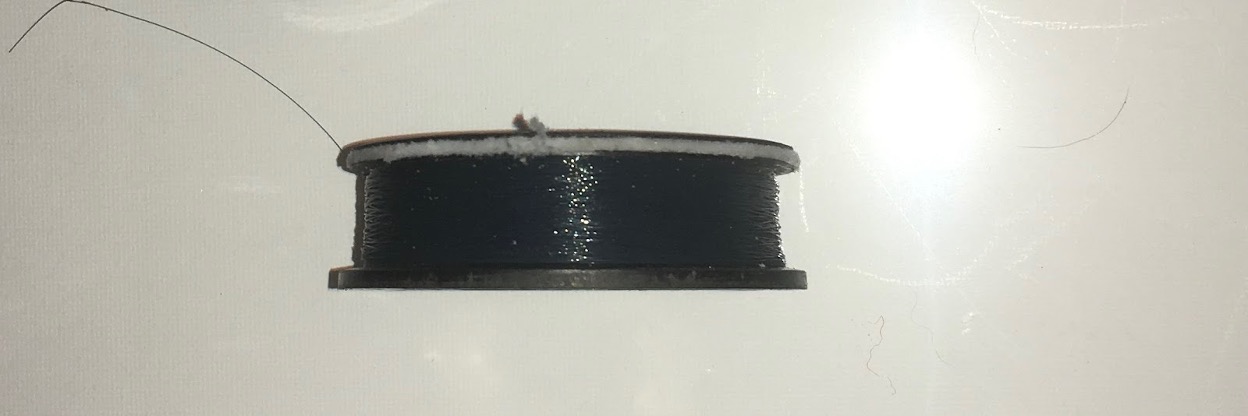
A spool with chenille fitted. For those of you who don’t know what chenille is, the nearest thing I can compare it to is a pipe-cleaner. For those of you who don’t know what a pipe cleaner is, first of all I envy you your youth! It is lengths of very thin but strong metal wire laid side by side encompassing soft nylon strands. The wires are twisted together causing the nylon to stand erect radially around the wires. In the olden days smokers of tobacco pipes would use a pipe cleaner to clean the tar from their mouth-piece and pipe stem. Acting as a line guard on a fishing reel is now a much better use.
The Goldmax therefore became the last great hurrah for closed-face reels and began gathering dust on the shelf. Every manufacturer dropped the close-face reel and developments in design ground to a halt. Now, zooming right up to date, with the resurgence in river fishing I reckon we are due a revival. Come on Shimano, come on Daiwa. Come and have a go if you think you’re clever enough!
Spinning reels
This is the generic name for the most ubiquitous form of fixed spool reel found in the UK. It is the one we all know, the one with the bale arm and the open spool with which we are all very familiar. “So why is it called a spinning reel then?” I hear you ask. “I don’t ever use mine for spinning!”
Well, I believe that the term ‘spinning reel’ refers to the fact that the rotor is exposed and spins, more so than the use to which the reel is put. Obviously it can be used for spinning and it is possible that spinners – lures that rotate – gave their name to the reel that propels them, but my theory is otherwise…
Remember, before spinning reels existed the only type of reel available was something resembling a centrepin. The radical design of having a spinning rotor, ie. winding line onto a spool, would have been the unique selling point for these new-fangled reels. Ergo… ‘Spinning reel.’ If you know differently please let me know.
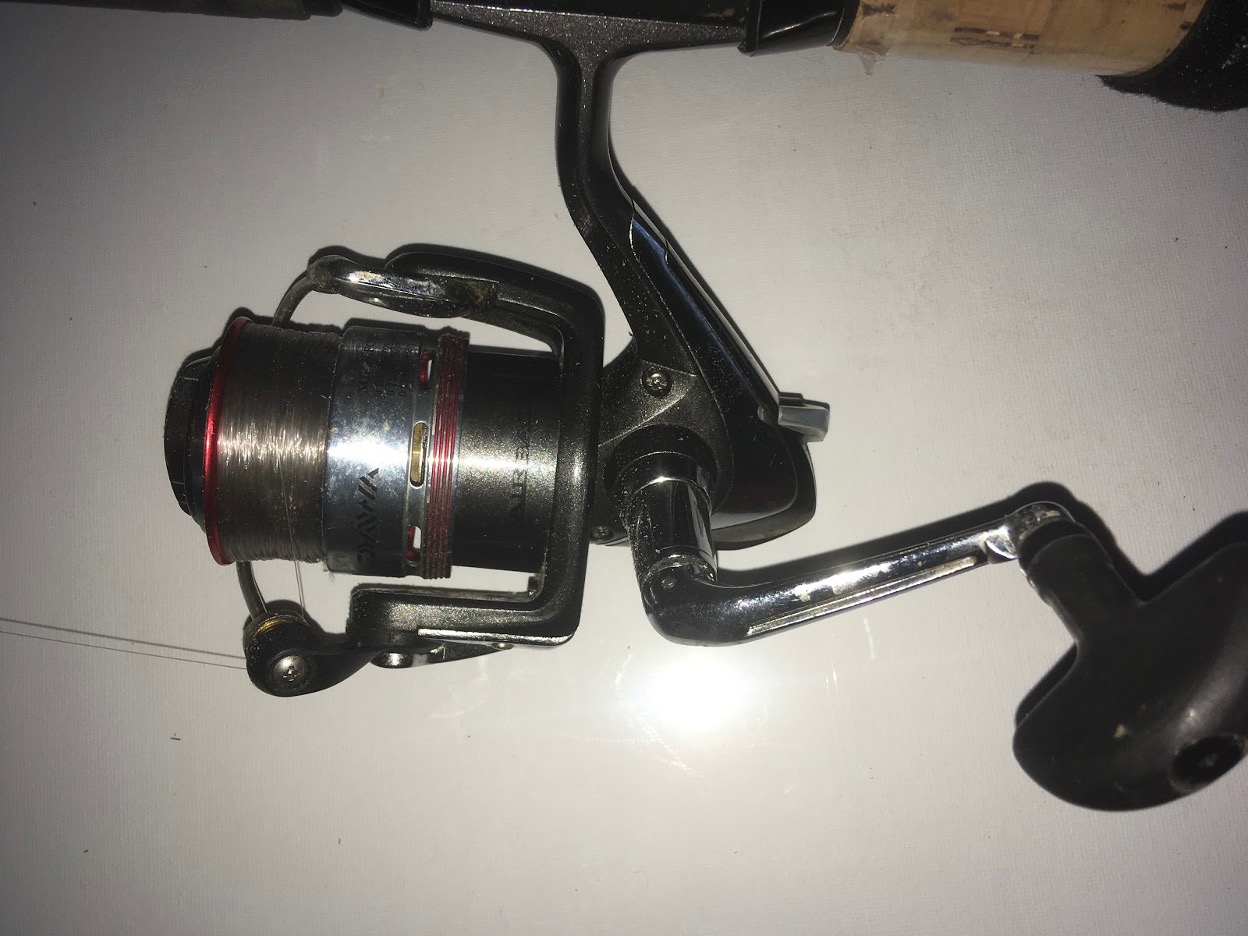
A front drag spinning reel made by Daiwa. The main body of a front-drag reel is lighter, smaller, more compact, and has cleaner lines than an equivalent rear drag reel. The only bit sticking out on the rear of the body on this one is the anti-reverse lever. The drag control knob is located on the front of the spool and it doubles as the screw-on locking disc for the spool. Increasingly this is becoming the most popular style of reel. Is this because we end-users like them, or could it be because the manufacturers find increased profit in making them? We will never know. I personally find adjusting a front drag reel mid-fight to be more challenging than adjusting a rear drag knob. Clearly, nobody ever asked my opinion on where to put the knob and what design of reel to make.
Spinning reels have enjoyed incredible development and improvements over the years but despite all the changes and modifications they still fall into three main categories. Front drag, rear drag and free-spool. Within these designs there have been numerous attempts at gaining a market advantage. Over the years we have ‘enjoyed’ automatic casting reels with a ‘finger dab’ required to release the bale-arm (Daiwa made one of these) and reels with bale-arm release levers like the Shimano Syncopate reel in the first photo. In addition there are single handles, double handles and single handles with counterbalance weight built in.
All modern spinning reels have spools that can be adjusted to release the line when a required tension is applied to that line. We call this ‘drag’. The amount of tension required can be varied, normally by adjusting a knob or a disc which in turn varies the spring pressure applied to friction plates within the mechanism of the reel.

A rear drag reel by Shimano. The drag control knob can clearly be seen sticking out the rear end of the body, like some angling tribute to the Kardashians. This particular reel, a Stradic GTM RA, is fitted with a Shimano peculiarity known as ‘Fightin’ Drag’. Similar to a baitrunner, this reel can be adjusted into freespool mode by the lever just above the drag knob. In mid position the reel acts as a standard rear drag reel. Push the lever to the left and the drag applied to the spool reduces incrementally until at the extreme position it becomes a free spool. Pushing the lever back to the right increases the drag incrementally until the extreme position is reached and the spool becomes fully locked. It is the reel equivalent of the love child between a standard rear drag reel and a baitrunner. I find it works brilliantly when you are playing a fish, especially bigger fish, and it gets two thumbs-up from me!
Because this system of friction plates and the resistance to releasing line is called ‘drag’, if the adjustment is made at the front of the spool it is known as a front drag reel. If the adjustment is made at the rear of the body of the reel then it is known as a rear-drag reel. Front drag reels are gaining favour these days because the reels can be made lighter and smaller for a given performance, advantages that have been made possible due to the significant improvements in drag washers.
The third type of spinning reel is a variant of the rear drag reel and has a second drag system. This is the ‘free spool’ type of reel that many anglers call a ‘baitrunner’. In truth it can only be called a baitrunner if it is made by Shimano, the manufacturer that invented the design and that holds the copyright to the name. Every other manufacturer has made their own copy of this type of reel and they usually have the term ‘free spool’ or ‘free running’ somewhere in their name.
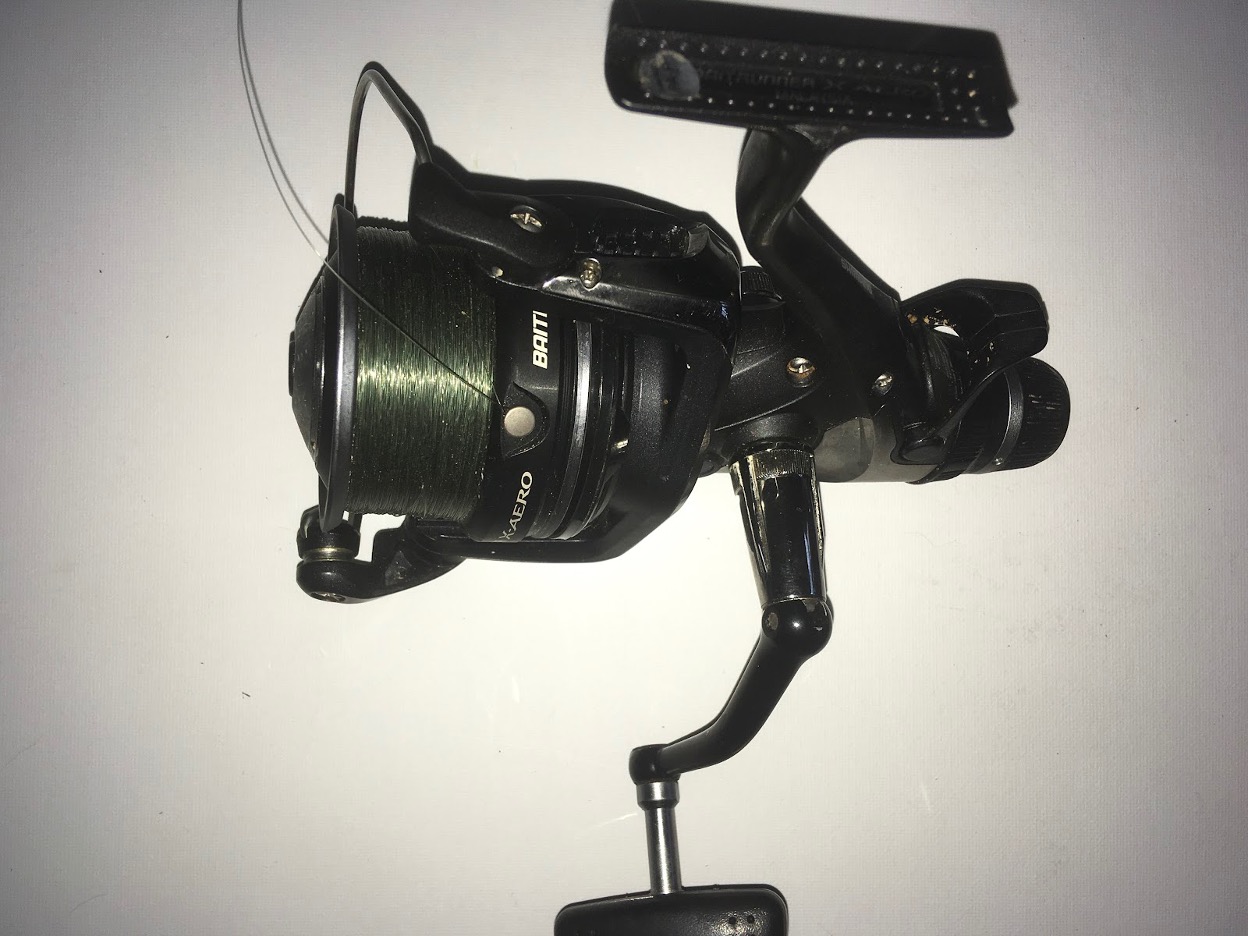
The Daddy of them all. A genuine Baitrunner by Shimano. This reel has no drag control on the front of the spool, both drag systems are controlled by a stacked pair of control knobs at the rear of the reel body. One knob-ring provides the drag setting for the spool during ‘normal use’ and the other provides the variation to the drag applied to the spool when it is in free-spool mode, aka ‘Baitrunner’ mode. The lever on the rear engages and disengages the ‘baitrunner’ option.
When fishing a static bait a free spool reel typically has a lever for completely disengaging the spool from the mechanism that rotates it. In this state the fish is allowed to take line freely off the reel. To ensure that wind or water flow does not strip line off the spool the aforementioned second drag system will provide adjustable resistance that is controlled by the angler. The angler can quickly cancel the free spool facility by winding the handle or flipping the lever back into its ‘normal’ position.
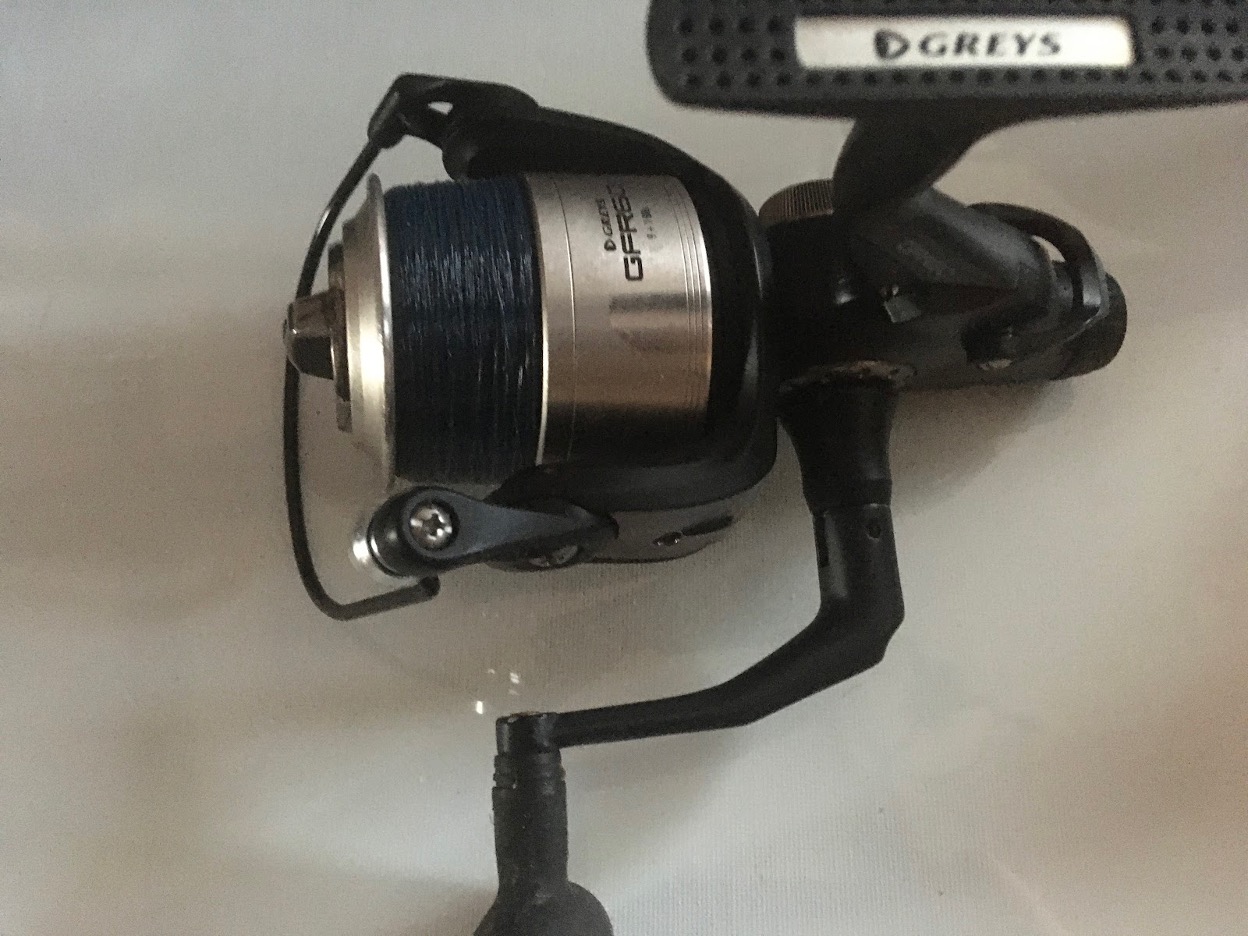
This is the free-spool offering from Greys. It is not a bad effort, it just doesn’t stack up when compared with a genuine Shimano Baitrunner. Greys make some fantastic rods and have a reputation for quality gear. This reel is a great first try but maybe it proves that they should possibly stick to what they do best… rods! The oddity of this reel, and the reason it is included here, is that it is a bit of an oddball hybrid, being both a Front Drag reel and a Rear Drag reel with its rear mounted free-spool drag control.
Centrepin reels
A centrepin reel gets its name from its humble origins. In its basic form the reel was a wooden spool spinning on a brass spindle – the eponymous centrepin – that was greased to allow the spool to rotate easily as the line was peeled off by the flow of water. In truth little has changed, there is still a pin down the centre, though that is now probably made of polished high carbon steel, and the spool is nowadays often made from a very light alloy fitted with extremely high quality stainless steel ball bearings.
The purist modern ‘pin angler, owner of the very latest in centrepin design, will delight in the fact that they can blow on the spool of their reel and it will set off rotating at 2000 rpm and if left alone it won’t stop for six days. As Clarkson would say: “Probably the best centrepin reel… in the world!”
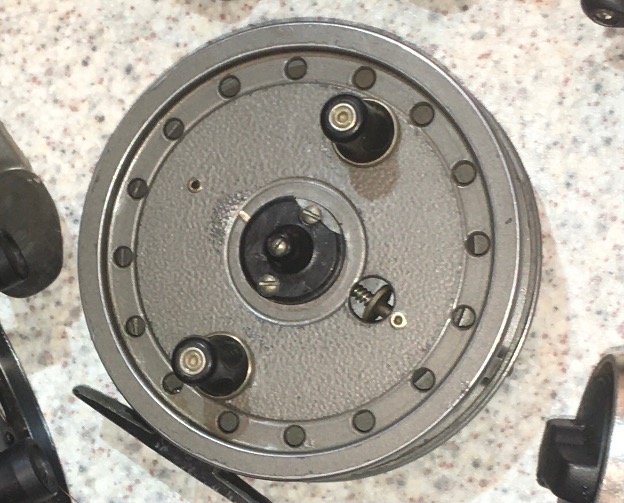
An old Rapidex centrepin reel. This one spins for 15 seconds before running out of steam. Works for me!
For mere mortals, the spool on a more basic and cheaper centrepin still rotates around a metal axle, as per its name. It will often require a regular spot of oil to get it to spin at its best and it will likely only spin for 20 seconds no matter how hard you ‘bat’ it. If you are lucky it may have one additional control device that locks it for transportation.
I have three centrepin reels, the oldest is a Rapidex made by J.W. Young & Sons and it has a few devices that add a small level of sophistication. It has drag system, where a spring loaded spindle is pushed against the axle of the reel. This drag only serves to stop overrun in normal use but there are many more modern centrepins that don’t have this. It also has a ratchet lever that provides an ‘on-off’ function for the clicking noise.
My most recent acquisition – The BlackZero illustrated below here – has two control switches and improved bearings, a centrepin for the 21st century, albeit a cheap one.
A ‘real’ dyed-in-the-wool centrepin angler, a description that can by no means be flung at me, fully understands how extremely gratifying the direct contact achieved when playing a fish can be. There is no drag system other than your own finger, no gear ratio between you and the fish, and whatever amount you turn the spool is exactly the amount of line you retrieve. Also very gratifying is the huge level of control available when running a stick float downstream. The lightest brush of a thumb on the spool will restrict its spinning and makes it delightful to hold the float back to absolutely any degree you want. Also, with such direct contact to your float, centrepins can make hitting bites both more positive and immediate.
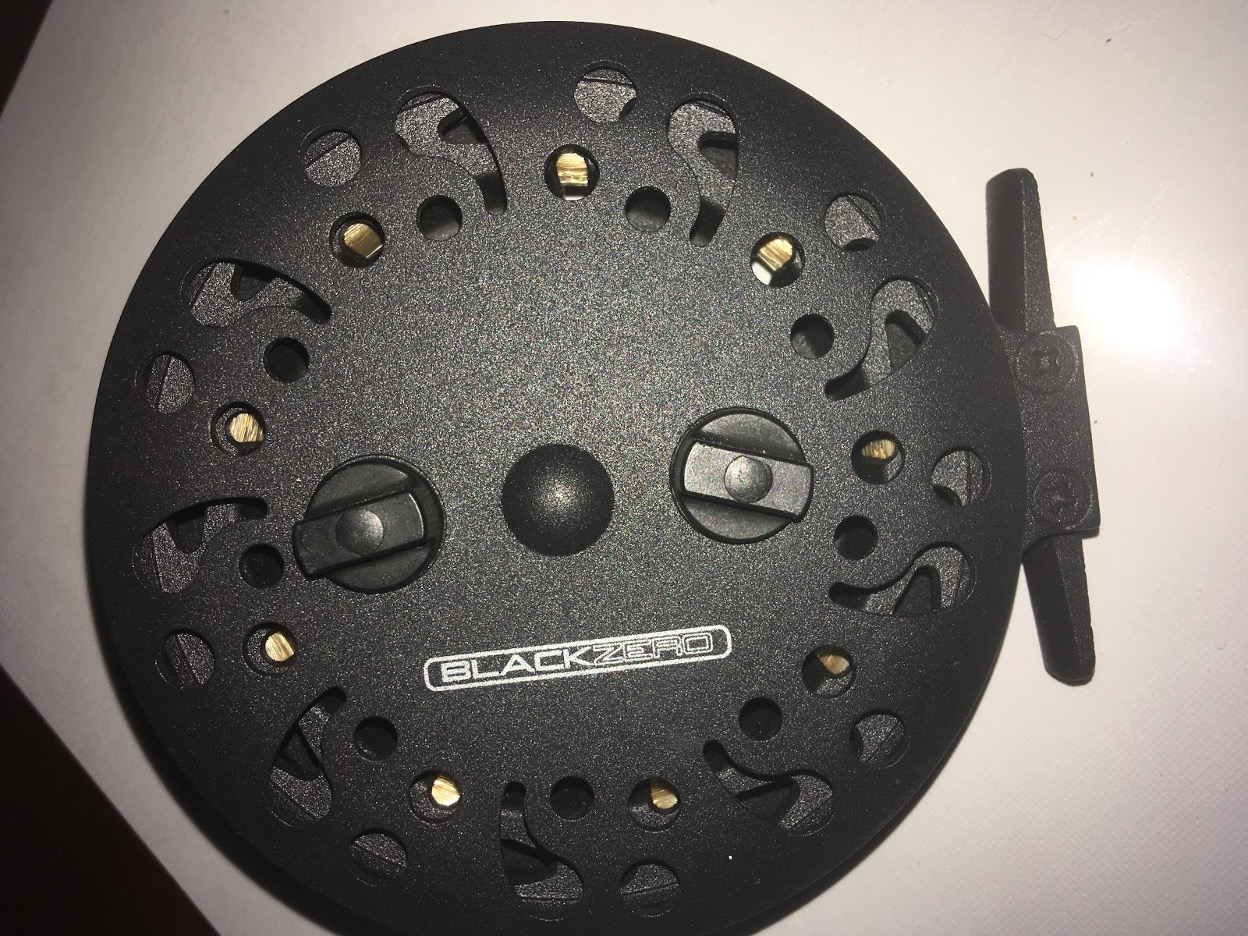
This centrepin reel has two control knobs. One initiates a ‘click’ as the line is being retrieved and also locks the spool so that it cannot unwind. Operating this is useful when the reel is not being used as the line can be put back onto the spool and it will not rotate causing an unwanted tangle. The second knob provides resistance when the spool is in operation so that there is no overun which would create another potential tangle.
Of course, the biggest drawback with using a centrepin is casting. This in itself is a work of science and black magic, and at best will usually only get you out as far as an extra rod-length. We have all seen John Wilson making it look as easy as anything, using his fingers to draw loops of line from between the rod rings and expertly releasing the whole lot, flinging his six-swan chubber float out in a neat straight line on the Wensum. It never quite works for me in the same way, though.
Happily all the benefits of a centrepin really only apply when you are fishing in a line downstream from your rod tip, so casting out any further than this would be a waste. You are almost certainly not going to be casting to the far bank unless the river is narrow enough to be jumped over, and my days of leaping over the River Severn are long gone. We used to do it in the eighties but not any more.
Baitcaster reels
The baitcaster is also known as a multiplier and for coarse fishing in the UK probably only comes into its own when fishing for predators. Unlike fixed spool reels like the previously discussed spinning reels and closed-face reels, baitcasters have spools that rotate. They are better suited to heavier diameter lines and have a cranking advantage because of the gear ratio applied. Two or three turns of the handle may only rotate the spool once, so big fish and heavy winching is the order of the day. You can see why Americans like them so much! They don’t worry too much about catching 500 bleak from the Wye, y’all!
In the UK we tend to use the term ‘multiplier’ when the baitcaster is used for sea fishing, though I believe there is no difference in the basic design. My own personal baitcaster is one I brought back from the US and is designed for flinging a lure at a bass, ergo it is perfect for even big perch, which look very similar to big-mouth bass, and will also handle reasonably sized pike.
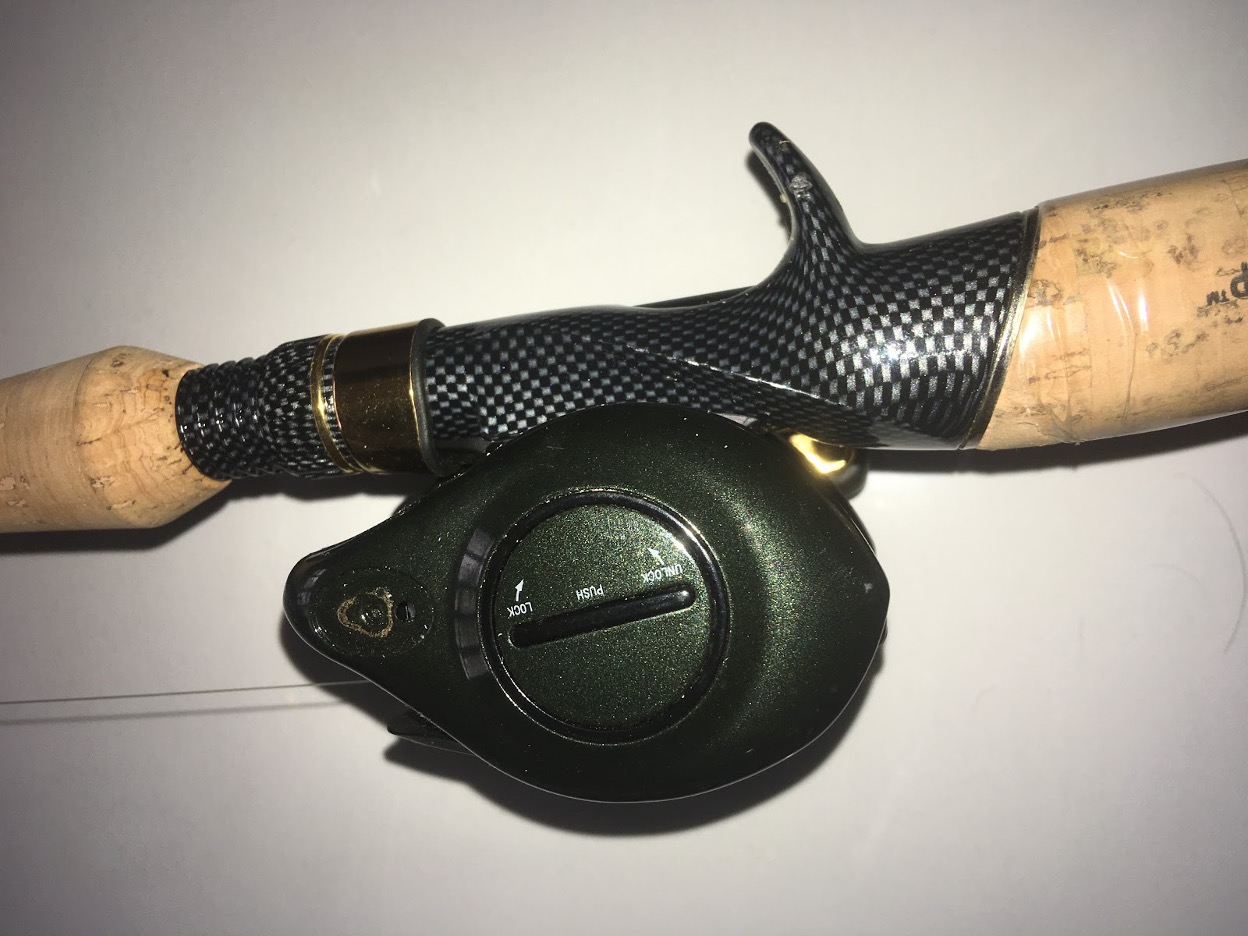
Setting up a baitcaster reel so that it doesn’t overrun and create the mother of all tangles takes a little practice. I am the furthest thing from an expert on these reels that you will ever meet, but I have gleaned a great deal of information from YouTube, where our American friends are decidedly voluble on the subject. If you fancy getting a simple predator outfit like mine (above) you can do much worse than check out what the ‘murcans’ have to say. I don’t think they actually use anything else.
Conclusions
Every single type of fish and every single type of venue is covered by tackle designed just for that eventually. I own so many reels that I am embarrassed to actually declare the number, but it has taught me that the variety and choice is potentially bewildering to the average angler. Hopefully everyone reading this will have found the odd bit of info that is new to them. If you didn’t learn anything new then I hope you will write your own piece on the subject and I might add to my knowledge too. I hope that somewhere along the line, even if you didn’t actually learn anything, my article brought entertainment and provoked a thought. If so I would love to hear from you in the comments. Many thanks, Chris.
FAQs
Q: I am confused, early on you said that almost all secondhand closed-face reels that you buy suffer from exactly the same problems. What are they?
A: Yes I did. The two issues always seem to be line caught around the spindle in the rotor and the chenille (line guard) being missing or damaged. Resolve those two issues and the reel can return to performing as new.
I believe a lot of anglers untangle the line and pull it away in frustration often leaving a turn or two still trapped around the spindle, yet thinking they got it all. The movement of the spindle is affected by the line because the spindle releases the pick-up pins. Also the resetting of the pick up pins can be affected by line in this area, ergo it explains why the reels fail to function correctly.
When you consider that the line only got up there in the first place because the line guard had failed, and that it will probably happen again half-an-hour later, it is little wonder that these reels are abandoned never to be used again. This is why they are a great secondhand bargain.
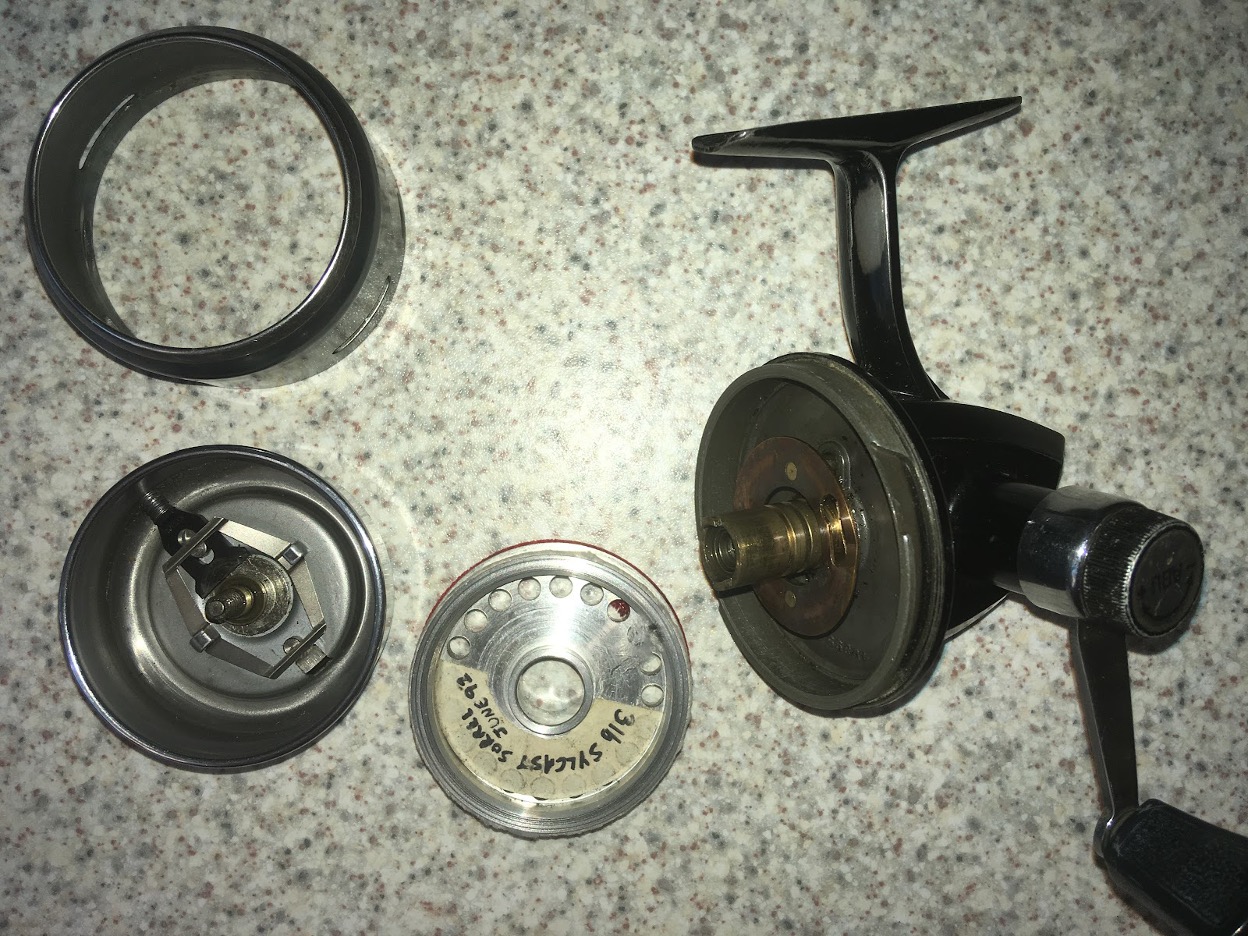
An old original Abu 506. Much smaller in diameter than the Goldmax (see other illustrations) this reel also was fitted with just one line pick up pin. The improved Abu later models like the 704 and 1044 benefit from two pick up pins and anti-reverse switches but still don’t have the overall performance of the 507 Goldmax reels.
Q: What is the best way of playing a fish, on the clutch or by backwinding? Or, as Shakespeare would have said, had he been a 21st century angler: “To backwind or not to backwind… that is the question!”
A: In the old days (the only days I know) almost every match angler I knew used backwind. The clutch plates (drag washers) on the reels back then were very often poor, fully on or fully off, they either locked up tight or made absolutely no difference to an escaping fish. You must remember that, these days, you may well be playing a netful of 5lb carp which will definitely pull line off a drag system. Our river matches back in the day were often barely won with 5lbs… and that was 200 fish. Times have clearly changed and carbon fibre drag washers have transformed how well the drag system works.
These days I do whatever feels best at the time. I generally always use a combination of the drag and backwinding on commercial venues and I seem to always exclusively backwind on rivers. It’s a personal choice.
Very many of the new models of Shimano reels are being manufactured without a backwind facility included. It came as quite a shock to me when I first used my new Ci4+ Stradic when I couldn’t find the anti-reverse lever. I even had to get the instructions out because I simply couldn’t find it. And do you want to know why I couldn’t find it? Because there ain’t one, that’s why!
I had absolutely no idea that reels could be sold like this, it seems like a crazy idea to me, so I never thought to check before I purchased. They might as well sell them without a handle as far as I am concerned, that would be just as incredible. Long after my ranting had subsided I must admit that I found that the drag system works brilliantly and I love using the reel, even without backwind. Who knew?
So, my answer is: do anything you feel comfortable with. Some older reels may be better if the drag is locked up fully tight and some of the newer reels might blow you away when using the drag. Equally some older anglers like me may always prefer to backwind whilst the younger ones look at us as though we were advocates for euthanasia. It takes all sorts.
Q: How much line should I put on a closed face reel?
A: I still use the smaller Abu reels such as the 1044 and 704 and despite being an improvement on the old 50 series reels (501 through to 507… I think?) they still can suffer from line bedding. As with all closed-face reels the reel performance will suffer if filled to the lip. They are simply not designed to take that much line.
Because, unlike a ‘normal’ spinning reel, the line does not run off the front edge of the spool, and instead lifts almost vertically up off the spool, there is no reason to overfill. The only thing the extra line does is create a nice cushion for the upper layers to sink into. For this reason you should put the minimum line onto a closed-face reel that you can get away with.
My personal preference is to buy line in spools of 150 yards or metres and stick half of it on one reel spool and half on another. So, my preference is 75yds. Alternatively, if I simply must, I may push this to the full 100yds, but absolutely no more than this. Even if you provide a backing for your line you should use something solid like electrical tape or bespoke solid packers because a backing line will still allow the mainline to sink into it.
So, there you have it. There should definitely, absolutely, unquestionably never be more than 100yards of line on a closed-face reel – unless your wife tell you otherwise and then just do as she says!
Comments
Leave a Reply
You must be logged in to post a comment.
2 thoughts on “Coarse fishing reels explained”
Similar articles
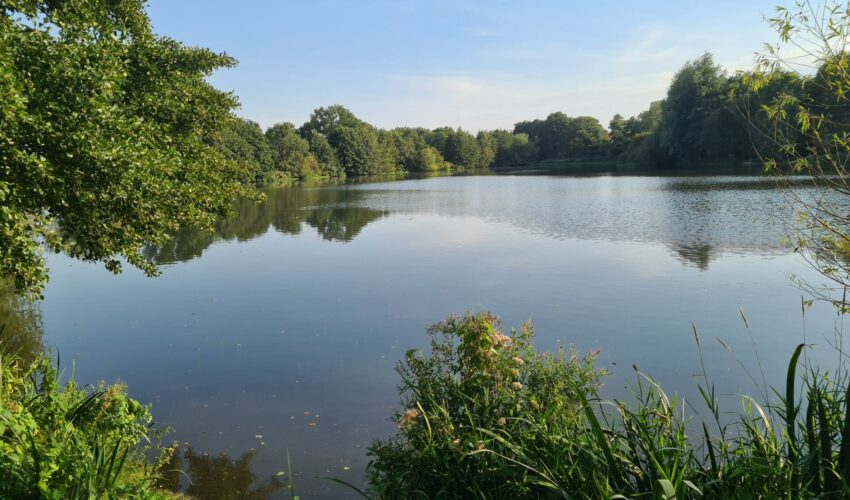
Our guide to fishing this spring (2025)
With the worst of the weather over (we hope!) and with spring finally here, it’s time to clean out that tackle box and get on the bank for some spring time fishing.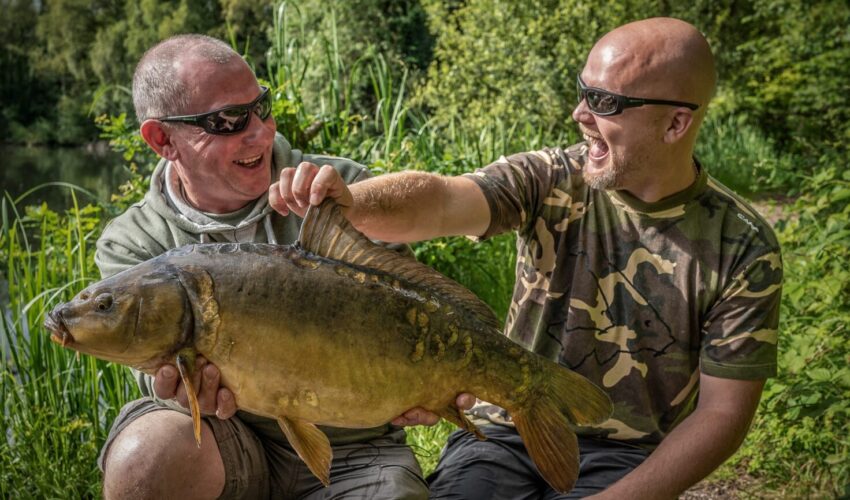
Take a friend fishing
Get ready to hit the water! From April 18th to May 4th, 2025, you can get a free fishing license to take a buddy out and show them what fishing’s all about. Yep, free! It’s all part of the “Take…
Fishing tips for hard days: How to get more bites
It happens to the best of anglers. Whether conditions are tough, the fish are moody, or our plans simply aren’t working, there are days we struggle. But what can you do to catch fish that seem unwilling to cooperate? There’s…
15% Off at Malston Mill – A Luxury Fishing Retreat in South Devon
Looking for the ultimate fishing getaway? Malston Mill Farm in South Devon is offering a 15% discount on 7-night bookings between March 8th and April 20th, 2025 – including Easter school holidays. It’s the perfect chance to book a stress-free,…
Angler shatters british record for Wels Catfish
Shaun Ing has landed a colossal Wels catfish, weighing in at a staggering 150lb 3oz, setting a new British record.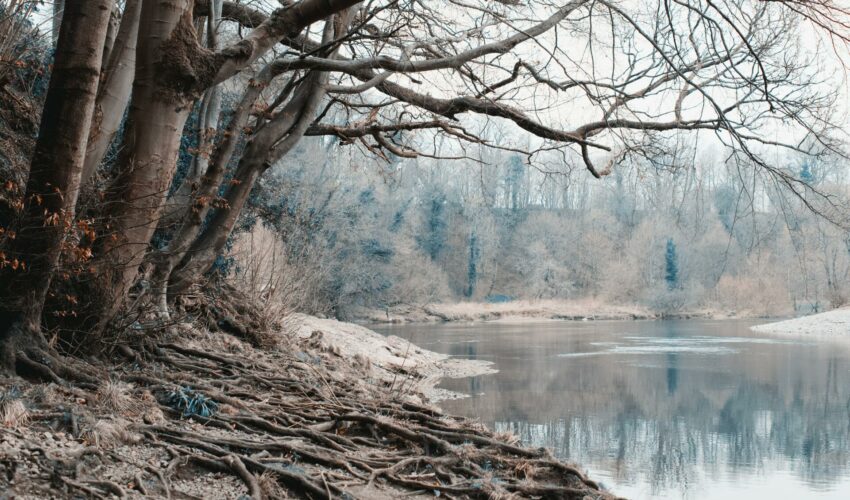
The cold truth: How water temperature impacts fish behaviour
Cold water slows fish metabolism, impacting their feeding and behaviour, but don’t let that put you off – read on to find out how and where to succeed in the UK’s chilly conditions.Search by Region or County
Find new places to go fishing in your local area or county by choosing your destination below





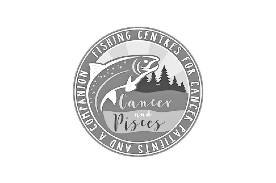




JW Young centerpin.
Was lucky enough to find a JW Young rapidex in a tackle job lot from an online auction site £36.00 for loads of stuff, the jw centrepin spins forever, description would be ”as new ” can’t wait to use.
Hi there,
a centre-pin reel is a joy to behold, especially when it is vintage and still spins forever. I really enjoy the high level of control they give when long-trotting too. A brilliant find. Enjoy.